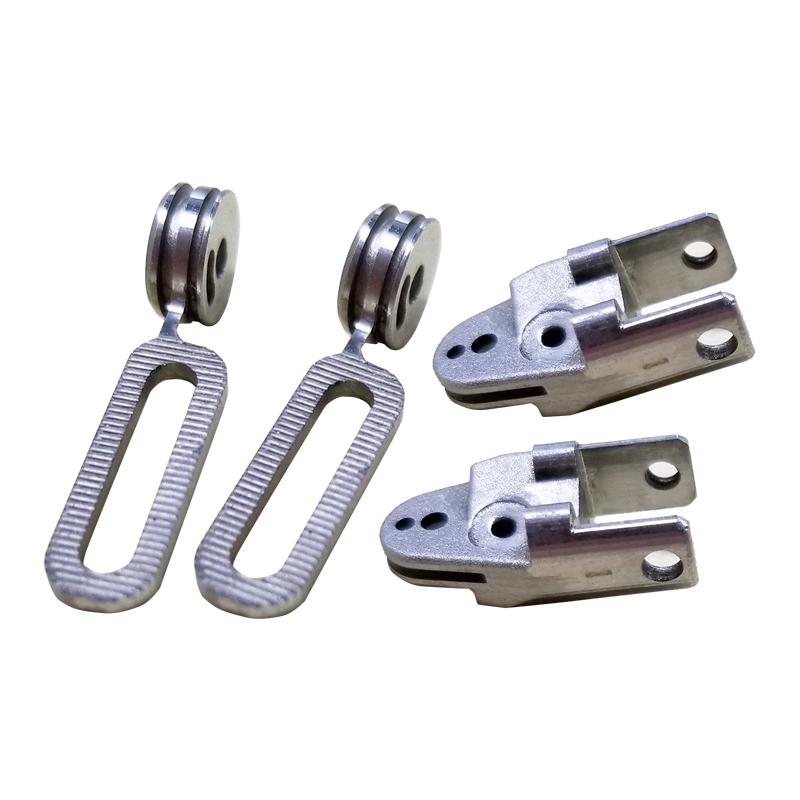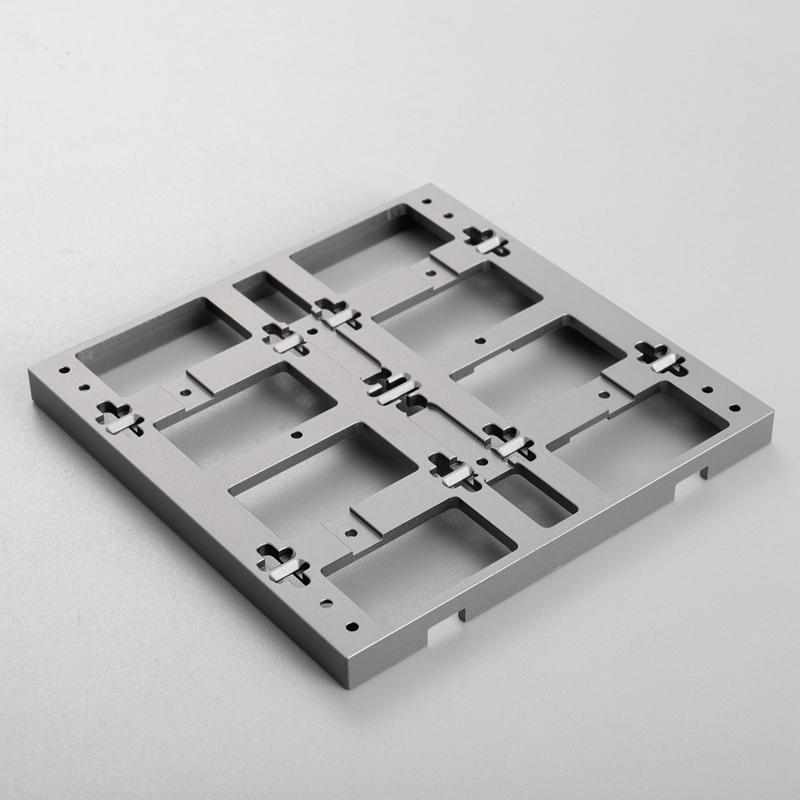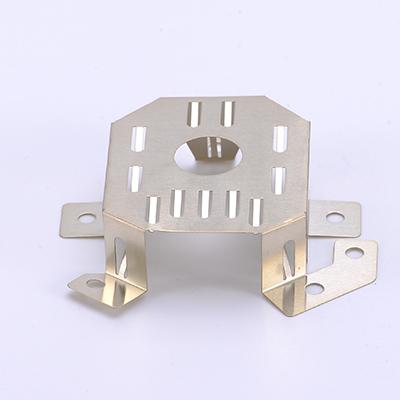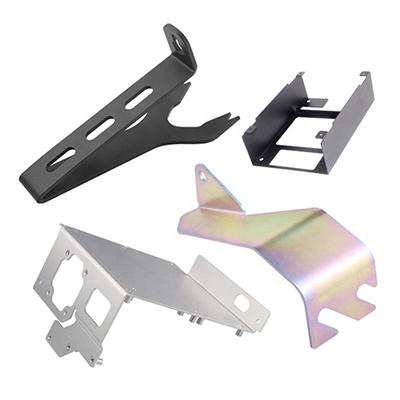The way metal parts are made can vary greatly. Each process has its own advantages, compatible materials and trade-offs. A better understanding of the scope of production methods will improve this decision-making process. This is an overview of eight different manufacturing processes that can be used to create custom metal parts. These are:
CNC milling and CNC turning, extrusion, metal casting, die-casting, metal injection molding, forging, sheet metal stamping, metal 3D printing

There are two main types of CNC machining technology. CNC milling machine is an automatic cutting machine. They use a rotating spindle head to cut away unwanted material. The rotation makes the material rotate against the fixed tool to remove the material into the desired shape. They are suitable for a variety of materials, including plastic, aluminum, stainless steel and titanium.
Working principle of CNC machining and turning
CNC turning involves the use of CNC lathes or multi axis CNC turning centers. Manufacturers use CNC lathes to turn materials with cylindrical and concentric features on parts. The power lathe combines an end mill and a drill to produce off-axis features without changing the platform. Special CNC lathes, commonly known as Swiss machine tools, are designed to rapidly produce small parts with complex features by combining multiple tools and spindles within the machine tool.
A typical lathe will rotate the part on a central axis to remove features by engaging rigid cutting tools. Other functions performed by the lathe include creating internal and external threads, creating flange features, O-ring grooves, and knurling textures.
CNC lathes and CNC milling machines have different shaft configurations. CNC lathes are usually 3-axis or 4-axis machines with a single spindle. The 3-axis CNC machining processes materials on the X, Y, and Z axes, removing shavings in these three directions. The 4-axis tool combines the lathe concentric feature with the milling machine tilting out of the motion. The lathe is an ideal choice for round parts, and the operation of irregular shapes and sharp edges is more intensive, while the milling machine is the opposite.
More modern CNC technology supports up to 5 axes. These tools add tilt and rotation capabilities to the traditional X, Y, and Z axes, allowing precise cutting of more detailed parts. 5-axis machining is also more efficient because it creates more part features in one operation. The milling machine has a variety of configurations, usually with 3, 4 and 5 axes.
What is CNC machining?
CNC materials: CNC milling machines and CNC lathes are suitable for similar materials. These include aluminum, brass, bronze, copper, steel, stainless steel, titanium, and zinc alloys. These tools are also suitable for plastics and composites, such as acetal, ABS, G-10, and high-performance materials such as PEEK or PTFE.
CNC use cases and industries: industries using CNC machining include: aerospace and national defense, automobile, consumer products, electronic products, industry, medical and dental robot technology

Extrusion involves pushing heated metal or plastic through the mold. In practice, it is similar to squeezing a tube of toothpaste. A mold creates a net shape, such as a tube, an L structure, or a more complex feature. Extrusion of metal parts usually requires post-processing, such as cutting, drilling, or machining. It is ideal for a large number of parts that require a constant cross-section.
Working principle of extrusion: The three types of extrusion are hot extrusion, cold extrusion and friction. Hot extrusion involves high temperatures to prevent hardening of the working material. Cold extrusion involves near room temperature, which provides some advantages over hot extrusion. The material may be stronger, less oxidized, or have less tolerance. Finally, friction extrusion involves the use of force to push the charge towards the die.
Extrusion material: Extrusion material can be plastic or metal. About 80% of the extruded metal parts are aluminum alloys. At the same time, polyethylene is the most common in plastic extrusion.
Use case and industry: Extrusion is a simple process compared to other methods. Its mold cost is 80% to 90% lower than injection molding and die casting. Extrusion also provides a smoother surface for paint and finishes. This makes extrusion an ideal choice for precision and decorative parts. Floors, windows and railings are ideal applications. Automotive and aerospace components are also ideal for extrusion.

3. Metal casting
Metal casting is a long-standing manufacturing process. It involves pouring liquid metal into a mold. The liquid metal hardens to the desired shape. It is then cooled and removed from the mold.
The metal casting process starts with mold making. Before liquid metal is poured, the pattern will form a partially shaped void in the mold. Modern plate making methods use accurate calculations to achieve the desired shape. This can include scaling to allow for shrinkage and preparing excess material thickness for later CNC finishing.
Sand casting is a simpler process and is easy to repeat. Investment casting requires more preparation, but may perform better when creating complex parts. Sand casting is usually more expensive; Investment casting requires more labor to change a given design. Manufacturers must determine the best process based on their budget and labor constraints and the quality of parts they want.
Metal casting materials: metal casting is a general process. It supports any metal stock part that can be realized in liquid form. This is why engineers from all walks of life use various materials in metal casting. Aluminum, magnesium and copper alloys are the most common. However, manufacturers also use zinc, steel and other metals.
Casting use cases and industries: In mass production, casting is generally superior to CNC machining in terms of cost and output. Metal casting enables high tolerance structural components for various use cases. Washing machines, cars and metal pipes all use metal castings.
4. Die casting
Die casting is an ideal choice for large quantities of complex metal parts. Die casting uses steel molds and low melting point metals as materials. Engineers use die-casting for complex projects where accuracy, reliability, and throughput are critical. The die casting uses reusable hard tools similar to the injection molding process to make the surface finish of the parts smoother, while maintaining low cost in large quantities.
In die casting, liquid metal is forced into the mold by high hydraulic or pneumatic pressure. This is different from the traditional metal casting of casting metal. Manufacturers prefer die casting when making parts with complex details. Using stress can create complexity more effectively.
Die Casting Materials: Die casting manufacturers typically focus on individual materials, including aluminum, zinc, or magnesium. This is because the raw materials are molten metal juxtaposed with the special die-casting machine. About 80% of die castings are made of aluminum. Zinc alloy is another low melting point metal, which is also commonly used in die casting.
Use case and industry: die-casting parts are widely used. They are sturdy and resistant to high temperatures. They also have smooth or textured surfaces. Die casting is conducive to high production, and can usually outperform CNC and investment casting. This supports a wide range of paints, plating and finishes. Nevertheless, die-casting is also an ideal choice for use with high impact and high stress equipment, where strength is crucial.

Injection molding is most commonly used to manufacture plastic parts. However, manufacturers also use injection molding services for metal parts. It is cost-effective even for large projects with high accuracy. Although it is very suitable for projects requiring small parts, metal injection molding or MIM can be used for parts of any size.
Unlike die-casting, metal injection molding uses a feed of a polymer metal mixture in which molten plastic allows the material to flow when heated. In this process, the material is also pressurized. The machine injects liquid material into the mold. The materials are cooled and the parts are manufactured in the form of moulds.
After forming, the parts are in a "green state", which means that their shape is correct but very fragile. The post sintering process completely ablates the plastic, leaving only molten metal. In this furnace process, it is usually completed in a vacuum furnace, and the parts will shrink considerably.
Metal injection molding materials: metal injection molding can be used together with metals common in other manufacturing processes. However, the process requires that these metals be made into powder and mixed with polymer for injection. In this way, parts can be rapidly formed and mass produced.
Use case and industry: Metal injection molding is similar to the plastic injection molding process used to manufacture parts. However, the high-pressure characteristics of injection molding add key advantages. It is effective for parts with small and complex details. This is too expensive for large-scale standard CNC processing technology. This is why metal injection molding is an ideal choice for medical, aerospace, automotive and defense industries
Compared with die-casting and other metal manufacturing methods, injection molds take longer to use, allowing for more parts before replacement or maintenance. In mass production or where finer part details are required, MIM usually outperforms die castings. This makes it suitable for large-scale repetitive processes. It also provides manufacturers with greater flexibility in terms of strength and unique characteristics.
6. Forging
Like metal casting, forging has been used for centuries. It is a process of forced heating and forming metal parts. The familiar image of blacksmith and anvil emerged in my mind. Today, forging is widely used in automated industrial processes.
Forged parts are generally stronger than parts made by other methods. That is because forging uses the natural texture of its materials. When forming in forging, the material does not need to be reduced to liquid, but only needs to be heated to a ductile state.
Forging material: stainless steel is one of the most common forging materials. Aluminum and bronze are also common forging materials.
Use case and industry: forging is an ideal choice for many industries. Its advantages and limitations make it an ideal process for use with other manufacturing materials. Forging tools, such as hammers or wrenches, are common examples of life-long components made in this way. The manufacturer shall identify use cases where forging advantages contribute to better business and production results.

7. Sheet metal and stamping
Sheet metal manufacturing involves cutting parts from sheet metal. Then, the blanking plate can be processed by the brake and the molding machine to produce angled bending and shape, so as to build a 3D structure. Sheet metal service features stamping to rapidly produce these parts. In fact, metal stamping is faster than any other metalworking process.
Punches cut and bend parts from sheet metal. Workers provide cutting or sheet metal rolls for the press. The machine straightens the metal as it is fed into the press. The strategic application of force enables manufacturers to adjust the shape of parts. Bend Applies force at an angle, for example, to create the desired angle in the part. The manufacturer uses bending machines in this process, and they have different sizes and lengths to choose from to meet the needs of the manufacturer. Sheet metal parts can be welded or riveted to create structural components. Press fit inserts such as PEM inserts can add mating features such as bosses, threads, etc. without custom machining.
Sheet metal material: Sheet metal is usually made of aluminum, copper or steel. Sheet metal also has a variety of finishes. This includes anodizing, electroplating, powder coating and painting.
Use case and industry: Stamping makes sheet metal manufacturing highly scalable in any industry. It is ideal for large batches and low unit cost. Large capacity functional parts such as shell, chassis and bracket are usually made of sheet metal.
However, the cost of stamping dies is usually higher than that of other processes. Nevertheless, manufacturers still make hundreds of millions of parts in the electrical, electronic and automotive industries every year. Sheet metal stamping are the best choice for robotics.

Machining series: CNC machining, stamping, forging, fine carving, pickaxe, CD pattern, etching, radium carving;
Surface treatment series: anodizing, sand blasting, plane grinding, oil spraying, PVD, electrophoresis, wire drawing, polishing, and screen printing.


 +8613538580966
+8613538580966

